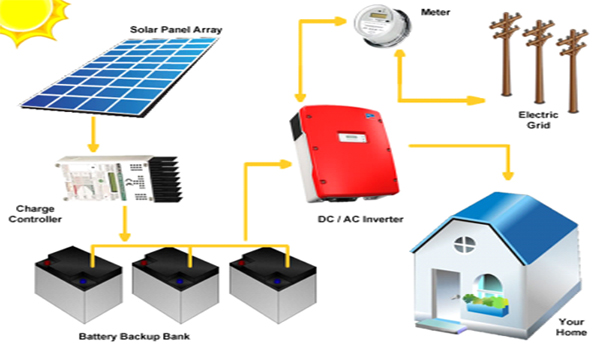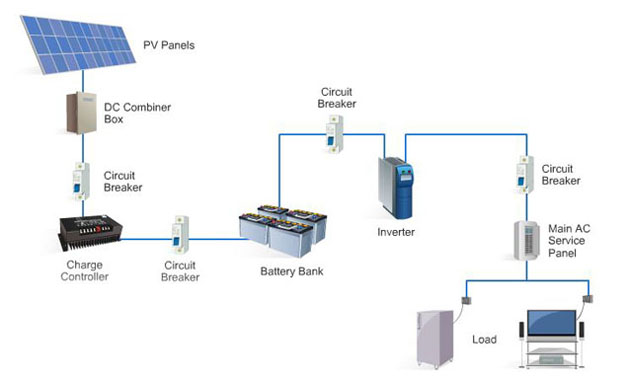
HYBRID SOLAR PLANTS:
Solar power, generated mainly during the daytime in the non-monsoon period, complements wind which generate power during the monsoon months in India. Solar panels can be located in the space between the towers of wind-power plants. It also complements hydroelectricity, generated primarily during India's monsoon months. Solar-power plants can be installed near existing hydro power and pumped-storage hydroelectricity, utilizing the existing power infrastructure and storing the surplus secondary power generated by the solar PV plants During the day time, the additional auxiliary power consumption of a solar thermal storage power plant is nearly 10% of its rated capacity for the process of extracting solar energy in the form of thermal energy. This auxiliary power requirement can be made available from cheaper solar PV plant b envisaging hybrid solar plant with a mix of solar thermal and solar PV plants at a site. Also to optimise the cost of power, generation can be from thecheaper solar PV plant during the day light whereas the rest of the time in a day is from the solar thermal storage plant for meeting 24 hours base load operation. When solar thermal storage plant is forced to idle due to lack of sunlight locally during cloudy days in monsoon season, it is also possible to consume the cheap excess infirm power from solar PV, wind and hydro power plants by heating the hot molten salt to higher temperature for converting stored thermal energy in to electricity during the peak demand hours when the electricity sale price is profitable.
SOLAR OFF-GRID SOLAR POWER PLANT:
An off-grid solar system is designed for the power needs of mid- to large-size homes. off-grid systems have no connection with the utility grid, and must make all the electricity necessary to power your home.
Off-grid solar systems operate from the stored energy in a battery bank. Solar panels are used to keep the battery bank charged. Your off-grid solar system has to be sized properly to meet your daily power needs and replace the stored energy pulled from the battery bank.

LAMPS AND LIGHTING
By 2012, a total of 4,600,000 solar lanterns and 861,654 solar-powered home lights were installed. Typically replacing kerosene lamps, they can be purchased for the cost of a few months' worth of kerosene with a small loan. The Ministry of New and Renewable Energy is offering a 30- to 40-percent subsidy of the cost of lanterns, home lights and small systems (up to 210 Wp). Twenty million solar lamps are expected by 2022.
AGRICULTURAL SUPPORT
Solar photovoltaic water-pumping systems are used for irrigation and drinking water. Most pumps are fitted with a 200–3,000 W (0.27–4.02 hp) motor powered with a 1,800 Wp PV array which can deliver about 140,000 litres (37,000 US gal) of water per day from a total hydraulic head of 10 m (33 ft). By 30 September 2006 a total of 7,068 solar photovoltaic water pumping systems were installed, and 7,771 were installed by March 2012.Solar driers are used to dry harvests for storage.
RAINWATER HARVESTING
In addition to solar energy, rain water is a major renewable resource of any area. In India, large areas are being covered by solar PV panels every year. Solar panels can also be used for harvesting most of the rain water falling on them and drinking-quality water, free from bacteria and suspended matter, can be generated by simple filtration and disinfectionprocesses, as rain water is very low in salinity Good quality water resources, closer to populated areas, are becoming a scarcity and increasingly costly for consumers. Exploitation of rain water for value added products like bottled drinking water makes solar PV power plants profitable even in high rainfall and cloudy areas by the increased income from drinking water generation.
